The Video Game Project
A Closer Look At The Prototypes That Became Your Favourite Games!
Atari 7800 Prototype, Debug & Sample Hardware
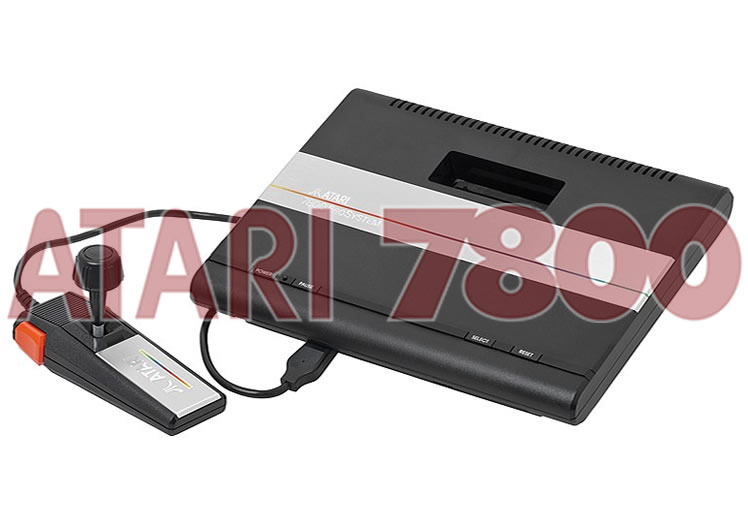 The Atari 7800 ProSystem was the first game system from Atari Inc. that had its chip design developed by an outside company, General Computer Corporation. GCC was formed in 1981 by Doug Macrae, John Tylko, and Kevin Curran and originally began life as a video game company. They started out making mod-kits for existing arcade games like Super Missile Attack, which was sold as an enhancement board to Atari's Missile Command. Initially Atari sued General Computer Corporation, but ultimately dropped the lawsuit and hired GCC to develop games directly for them (and stop making enhancement boards for Atari's games without their permission). They went on to create an enhancement kit for Pac-Man called Crazy Otto which they sold to Midway, who for their part went on to sell it as the sequel Ms. Pac-Man aswell as also developing Jr. Pac-Man, which was that game's successor.
The Atari 7800 ProSystem was the first game system from Atari Inc. that had its chip design developed by an outside company, General Computer Corporation. GCC was formed in 1981 by Doug Macrae, John Tylko, and Kevin Curran and originally began life as a video game company. They started out making mod-kits for existing arcade games like Super Missile Attack, which was sold as an enhancement board to Atari's Missile Command. Initially Atari sued General Computer Corporation, but ultimately dropped the lawsuit and hired GCC to develop games directly for them (and stop making enhancement boards for Atari's games without their permission). They went on to create an enhancement kit for Pac-Man called Crazy Otto which they sold to Midway, who for their part went on to sell it as the sequel Ms. Pac-Man aswell as also developing Jr. Pac-Man, which was that game's successor.
Under Atari Inc., GCC made the original arcade games Food Fight, Quantum, and an unreleased title called Nightmare; developed the Atari 2600 versions of Ms. Pac-Man and Centipede; produced over half of the Atari 5200 cartridges; and developed the chip design for the Atari 7800, plus the first round of cartridges for that base unit. General Computer Corporation later changed their companies overall direction and went into making computer peripherals. Today the company, based in Burlington, Massachusetts, focuses exclusively on laser printers.
Originally called the Atari 3600, the 7800 was designed in 1983-1984 with an intended mass market rollout in June of 1984. At the time the 5200 system was not selling well, and the 2600 was nearing its end of life. Atari were feeling the pressure from competitors including Coleco’s Colecovision and Mattel’s Intellivision. There was also a lot of competition with the home computer market with the Apple II and Commodore 64 home computers. Atari wanted to release a new console that had superior graphics, and that was backwards compatible with the Atari 2600 system, something that the Atari 5200 wasn’t, although Atari would later release an add-on adapter to play Atari 2600 on the Atari 5200.
The console was announced on May 21st 1984 with a mass market rollout planned for June of the same year. With twelve launch titles, and a special cartridge that would enable the player to save high scores for the first time ever, the Atari 7800 would be superior to other home gaming consoles at the time. The new custom CPU that would power the system was capable of moving 100 objects on-screen at the same and time and displaying a 256 color palette. Atari were in a position where they could potentially take over the video game scene in the west. Unfortunately for them it didn't exactly happen like that!
The 7800 was released but nearly immediately withdrawn from the market. In July of 1984 Warner Communications sold the home computing and game console divisions of Atari to Jack Tramiel, the founder of Commodore International. Tramiel decided to shelve the Atari 7800 and hold off on it's widescale release. At this point General Computer Corporation had not yet been paid by Atari for their part in the development of the Atari 7800, and Tramiel felt Warner Communications should foot the bill. Warner however felt that as the companies new owner, Jack Tramiel, should pay GCC what they were owed. Tramiel believed that the 7800 should have been covered as part of his acquisition deal.
By 1985 Jack Tramiel relented and realised that he would have to pay General Computer Corporation for their contribution and the Atari 7800 was finally to be launched with a very small $300,000 marketing budget, far smaller than what Warner Communication had originally planned. Initially planned to have expansion modules to allow keyboards and even a laserdisc player, which addressed a lot of parents concerns on investing in a home video game system and not a computer, when the Atari 7800 finally saw the light of day in 1986, none of these add-ons were produced. The previously advertised high score cart was cancelled and only three launch titles were available. Due to the videogame market crashing, retailers cut had cut orders for videogames across the board. Not only that but for the titles that were released, licensing negotiations had to begin from the very beginning because Tramiel did not agree with some of the existing arrangements negotiated by Ray Kassar.
The original production run of the Atari 7800 languished on warehouse shelves until it was re-introduced in January 1986, after strong 2600 sales the previous Christmas. It was released nationwide in May 1986 for a mere $79.95, down from their initial 1984 price tage of $140. A huge struggle the Atari 7800 faced going forward was the ongoing lack of third party support. Nintendo, who had recently entered the western video games market with the Nintendo Entertainment System (known as the Famicom or Family Computer in Japan) had a non compete clause with their third party developers, meaning that none of them could develop games on other systems. This was to avoid the over saturation of games in the market (one of the reasons blamed for the game industry crashing in the first place) and to have full control of the quality of games for their NES system. Some NES titles were developed by companies who had licensed their title from a different arcade manufacturer. While the creator of the NES version would be restricted from making a competitive version of an NES game, the original arcade copyright holder was not precluded from licensing out rights for a home version of an arcade game to multiple systems. Through this loophole, Atari 7800 conversions of Mario Bros., Double Dragon, Commando, Rampage, Xenophobe, Ikari Warriors, and Kung-Fu Master were licensed and developed.
The 7800 struggled on valiantly however and even managed to sell 3.77 million units until they finally discontinued support for the system in 1992. You see, graphically the 7800 was an excellent machine for its time, in both 1984 and 1986. Its weak point was sound. It utilized the same sound chip as the 2600. Programmers did get around this limitation however, by adding the 5200's POKEY sound chip directly into certain cartridges. Because of this several of the previously mentioned arcade ports for the system were actally brilliantly made. They just didn't have the marketing behind them to overcome the steamroller that was Nintendo. The Atari 7800 finished it's life span with roughly 60 (give or take one or two) titles to call its own, which means it has been ignored by potential buyers due to the perception of a small library of games. In fact, some of the consoles games are very good to excellent and combining that with a near 100% compatiblity rate of the existing Atari 2600 game library it's a system definitely worth checking out. As an added bonus the Atari 2600's controllers and peripherals are also compatible.
Elsewhere in the world, the 7800 had more success. Systems sold outside North America included Asteroids built-in to the OS ROM. In Australia and New Zealand, it included a 32-in-1 cartridge, although it was just a re-labeled 2600 version. The Atari 7800 ProSystem was the ultimate video game console that everyone would have wanted circa '83/'84, especially if they had actually followed through with all the add ons that were initially promised. In fact, things could have been so much different. Early in the Spring of 1983 Nintendo approached Atari to license and sell their Famicom system under the Atari name since Nintendo didn't feel it could compete against the once mighty video game giant. It wasn't to be however. In August of 1983, Ray Kassar was let go as Atari's CEO. In the upper management reshuffle the Nintendo deal just slipped through the cracks.
Like many retro consoles the Prosystem now has a cult following and I can see why. As Atari once claimed themselves "It allows you to play Atari games the way they were meant to be played". The system might not have gotten the fairest swing of the bat but it stood the test of time and Atari continued to support it up until 1992. Ataris console survived through the release of the heavy hitters that were the N.E.S., Master System, Genesis / Mega Drive and Super Nintendo. The 7800 Prosystem truly is an iconic part of gaming culture!
Modified Atari 7800 Console
It was intended for U.S. Atari 7800 systems to have a built-in game (Pole Position II) included that would automatically start when you turn on your 7800 without a game cartridge inserted. Atari didn't have the built-in game feature ready to go in time to ship for the May, 1984 rollout to test markets, so they shipped the test market units with Pole Position II as a physical pack-in cartridge instead. This was only meant to be a temporary work-around, which is one reason why the original Pole Position II cartridge label looked so basic. Future NTSC Atari 7800 units were going to include Pole Position II built into the system.
Despite being an NTSC console this modified Atari 7800 actually has Asteroids built into the system, like it's European counterpart. It was modified by Calvin (presumably removing the internal encryprion) and is also marked for the attention of Steve Calfee who was, among other things, a senior microprocessor engineer with Atari Inc. His voice can be heard in the A8 version of Sinistar. Calfee later went on to work with Tengen, which explains the mailing label. Tengen were due to work on versions of Pit Fighter, Klax, Rampart and more for the Atari 7800 but the were never released.
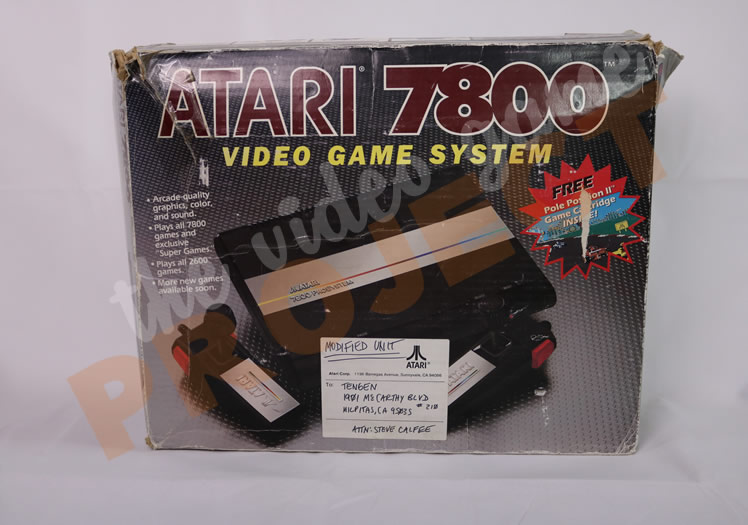
Console Box Front
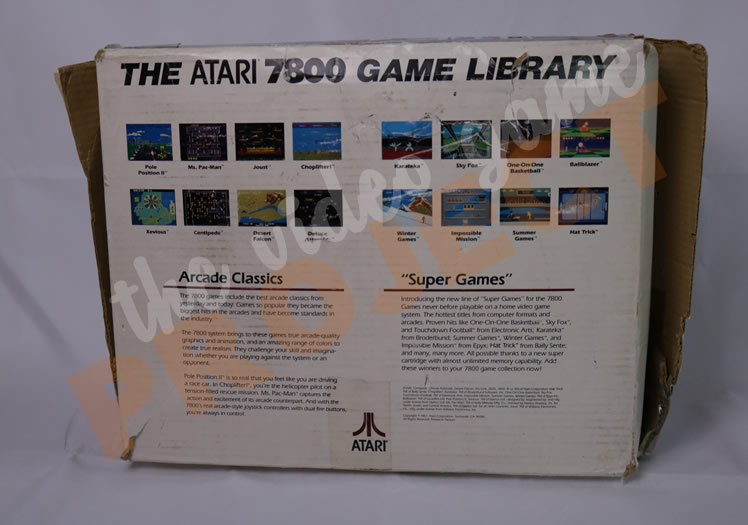
Console Box Back
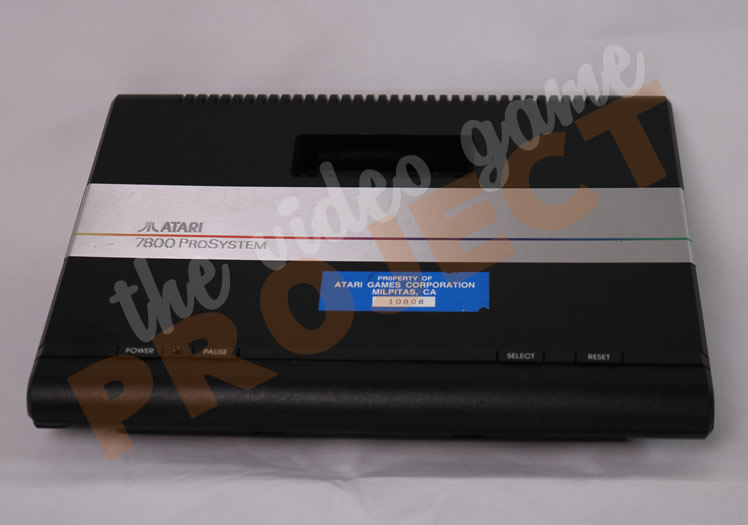
Console Top
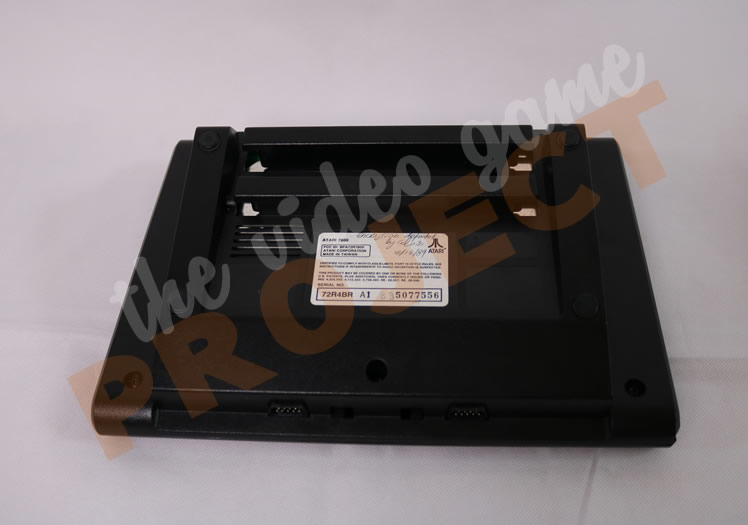
Console Bottom
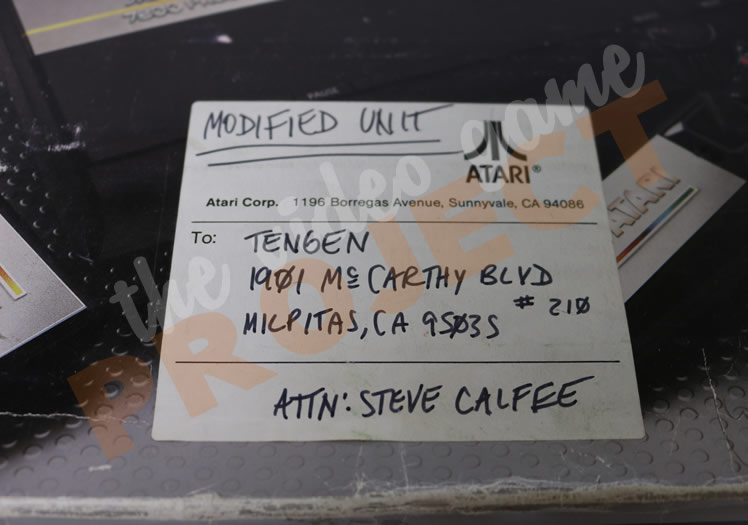
Close Up Box
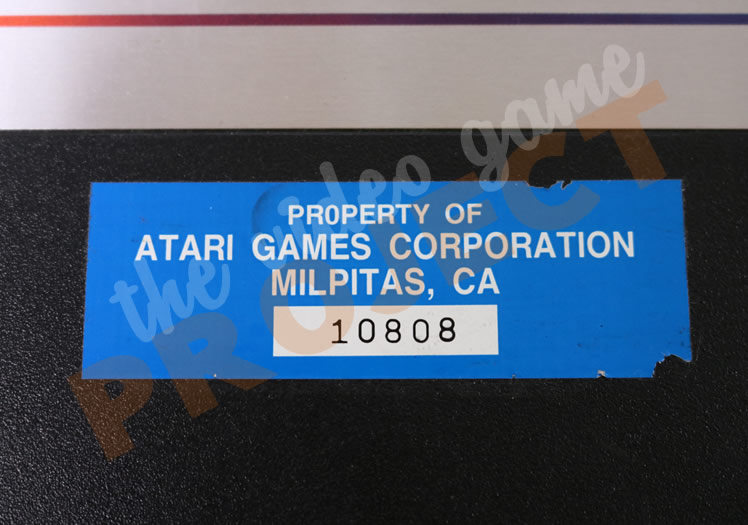
Close Up Top
